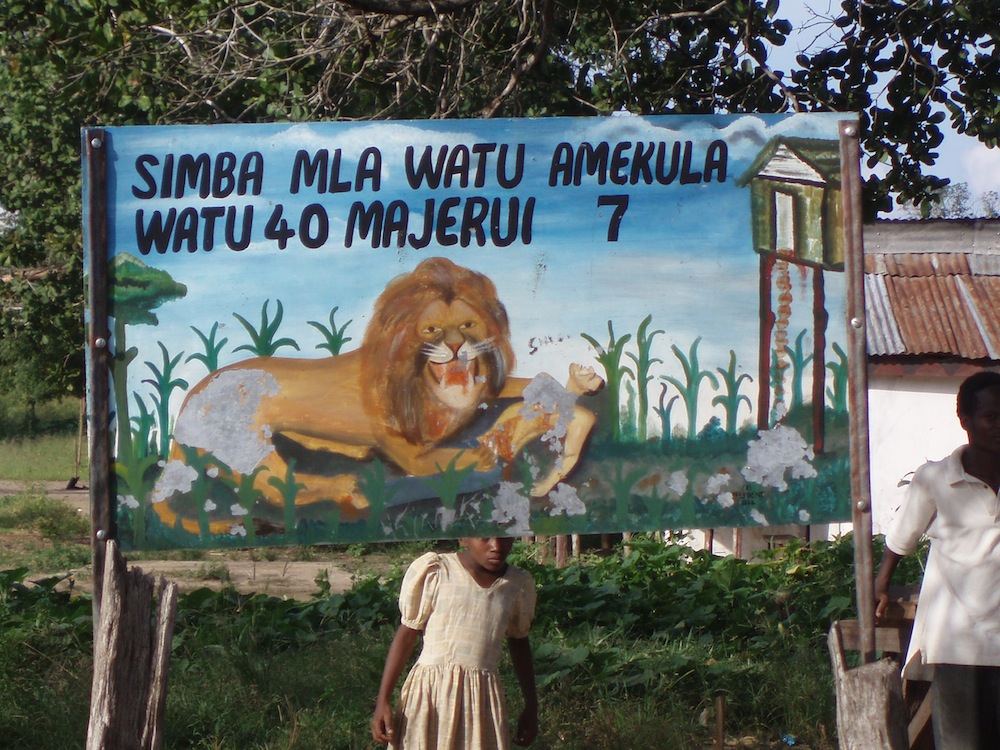Lions Attack Humans When the Full Moon Wanes

The full moon is supposed to be the time when werewolves roam, but a new study finds that there's more to fear from large, nocturnal predators in the days after the moon is at its brightest.
African lions are more likely to attack and kill humans in the days right after the full moon, according to the study, published today (July 20) in the journal PloS ONE. The danger comes because lions struggle to catch prey — which see the predators coming — during the bright nights when the moon is full. In the 10 days after the full moon, however, the waning moon doesn't rise until after sunset. Anyone still outside when darkness falls is easy picking for the extra-hungry cats.
"The number of attacks on people in the evening hours skyrockets for the first five days after the full moon," study researcher Craig Packer of the University of Minnesota told LiveScience. "It was quite striking." [Top 10 Deadliest Animals]
By the light of the moon
For people in Tanzania, where Packer and his colleagues focused the research, the danger from lions is very real: More than 1,000 people in southern Tanzania were attacked by lions between 1988 and 2009. Over two-thirds of the attacks were fatal, with the lions eating the victims.
Earlier research had shown that lions have trouble hunting wildebeests and other prey when the moon is bright. Because lion attacks are a problem in Tanzania, Packer wanted to find out whether lions hunting humans are also affected by the lunar cycle. He and his colleagues analyzed data on about 500 lion attacks on humans in Tanzania since 1988, excluding those without a time of day listed or those that happened when people were hunting lions themselves. For each attack, the researchers noted the time of day and time of month.
They found a marked moonlight effect: Hourly attack rates were two to four times higher in the 10 days after the full moon compared with the 10 days before the full moon. The time of year also mattered. During a moonlit night in the wet season, when the night sky is more likely to be cloudy, lion attacks occurred three times as often than during similarly lit nights in the dry season, when clouds are rare and the nights brighter. [Read Moon Myths: The Truth About Lunar Effects on You]
Get the world’s most fascinating discoveries delivered straight to your inbox.
Harbinger of danger
Much of the effect was driven by attacks in the early evening hours, Packer said. In the days before the moon is full, it sets early, meaning the darkest time of night is in the early morning when few people are out and about. After the full moon, however, there is a gap of darkness between sunset and moonrise in the evening. People are more likely to be outside during the evening, Packer said, so they're more vulnerable to attack.
"If you go out and see the full moon on a beautiful evening, that's the safest night you're going to have," Packer said. "But the sight of the full moon is a good clue that in the coming days, there will be those periods of darkness."
The findings may extend beyond Tanzania, Packer said, explaining why humans so often fear the dark —and attribute mystical powers to the full moon.
"These nocturnal, stealthy predators rely on darkness to creep up and attack people," he said. "The moon would have had a very powerful effect throughout our evolution."
You can follow LiveScience senior writer Stephanie Pappas on Twitter @sipappas. Follow LiveScience for the latest in science news and discoveries on Twitter @livescience and on Facebook.

Stephanie Pappas is a contributing writer for Live Science, covering topics ranging from geoscience to archaeology to the human brain and behavior. She was previously a senior writer for Live Science but is now a freelancer based in Denver, Colorado, and regularly contributes to Scientific American and The Monitor, the monthly magazine of the American Psychological Association. Stephanie received a bachelor's degree in psychology from the University of South Carolina and a graduate certificate in science communication from the University of California, Santa Cruz.



